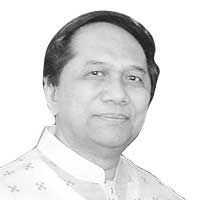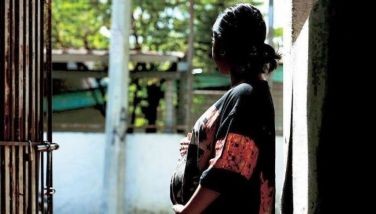Raymundo F. Navarro: Tagalog cinema pioneer

One of the pioneers of Tagalog cinema was Raymundo F. Navarro who, along with Jose Nepomuceno, Julian Salgado, Jesus Cacho, Pedro and Natalio Carriedo, established Parlatone Hispano-Filipino in 1935. Navarro served as its president and general manager.
Its first picture was Diwata ng Karagatan, starring Rogelio de la Rosa and Adela Flunkers. In 1937, Navarro went abroad for a business and pleasure trip which resulted in the sale of Diwata in Europe and South America. In 1938, he directed a movie on Asedillo, a folk hero in the mountains of Quezon, Laguna and Batangas, starring Darmo von Fraser Acosta and Lucita Goyena. Asedillo had two versions: Sa Pugad ng Agila (Tagalog) and Eagle’s Nest (English).
In Parlatone’s first four years, it became the country’s most successful studio, the home of the biggest stars, scriptwriters, technicians, craftsmen and directors. To name some Vicente Salumbides, Carlos Vander Tolosa, Luis Nolasco, Mar Esmeralda, Gerardo de Leon, Enrique Jarlego. The studio’s stars included Rosario Moreno, Carlos Padilla, Elsa Oria, Yolanda Marquez, Angel Esmeralda, Jose Padilla Jr., Rosita Garriz, Doris Young, Leopoldo Salcedo, Fely Vallejo, Fleur de Lis (Mona Lisa), Purita Sta. Maria.
Raymundo F. Navarro was born in 1906 in Paete, Laguna. He took up business administration in Jose Rizal College. He was married to Laura Adea and had six children: Iluminada, Raymundo Jr., Carmencita, Angel, Antonio and Laura.
Carmencita is Philippine STAR columnist Carmen Navarro Pedrosa, who wrote the controversial The Untold Story of Imelda Marcos and its sequel The Rise and Fall of Imelda Marcos.
In 1939, a fire destroyed Parlatone studio in Mandaluyong and during the war and liberation all its equipment was destroyed. Despite the losses, Parlatone produced another picture in 1948, Carmelita.
Perhaps Mrs. Pedrosa could write more about the life and times of her father, who ought to be honored and remembered as a pioneer of Tagalog cinema.
(With this write-up are ads of movies produced by Parlatone Hispano-Filipino. Sources: Motion Pictures in the Philippines by Vicente Salumbides and CCP Encyclopedia of Philippine Art.)
— RKC
- Latest
- Trending






























